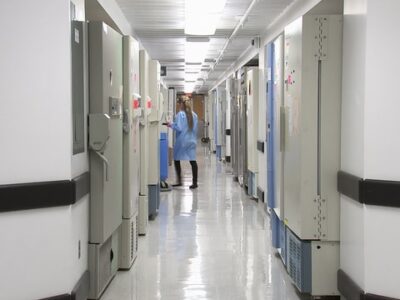Think back to your days on the playground. Were you that kid in school who always got hurt? Chances are you were cared for by a school nurse. But these professionals do more than just hand out Pepto Bismol and Band-Aids, they play a vital role in promoting the health and well-being of the communities in which they serve.
School nurses develop care plans for the entire campus by giving staff and faculty the support they need to care for themselves and their students. Their responsibilities include creating individualized care plans for students with medical needs. This information is then shared with everyone who interacts with the child, including faculty, staff, and even bus drivers.
But the ongoing nurse shortage is having an effect on school nurses as well. There aren’t enough school nurses to go around with many providers floating between different facilities or districts. Schools have to compete with hospitals and doctor’s offices for talent, and many providers would rather work in a hospital than a school.
“As far as the nursing shortage goes, I definitely have seen that, especially when it comes to hiring new people or replacements,” said Decatur City Schools lead nurse Sarah Payne. “It was challenging to fill those roles because nurses are leaving, nurses are aging, there just aren’t as many nurses as there once were.”
And competition is fierce. Many hospitals attract nurses with $10,000 to $20,000 signing bonuses, but school districts can’t afford to pay this much up front.
The COVID-19 pandemic drastically changed the scope of the job as well. School nurses are being asked to do more than ever before with fewer resources, but their impact isn’t going unnoticed.
“(During the height of the pandemic) we were doing all of this, plus dealing with COVID,” said Kelli Morton, the lead nurse for Hartselle City Schools. “There was a little bit more light shed on how important a nurse’s role is in a school. We were the experts for the first time in a really long time.”
Even though the number of COVID-19 infections among students has dropped dramatically, mental health remains a prominent concern.
“Students were home for two years isolating themselves,” said Alabama Association of School Nursing (AASN) President Julie Bailey. “That’s all they heard, ‘isolate, isolate,’ for so long, and there are some kids who I don’t feel are out of that.”
School nurses have seen an uptick in the number of students suffering from anxiety and depression now that they are largely back to learning in person. And these providers are there to help them with this transition.
“I really hoped COVID would be an eye-opening experience to show educators that we do need a nurse in every school,” Bailey said. “I don’t want to say (COVID) has changed school nursing forever, but it has definitely changed it.”
Morton has seen a rapid increase in the number of students seeking on-campus healthcare services in the wake of the pandemic. And it’s not just the flu and stomach pains. The school district reported 7,236 clinical visits during the 2022-2023 school year. That’s nearly twice the number of students enrolled.
“Sometimes the perception is just that school nurses put on Band-Aids all day, and maybe give an ADHD pill every now and then,” Morton said. “It’s that, plus so much more.”
The district administered medication 7,480 times during that time. There were 75 tube feedings for students who can’t eat by mouth. There were also 2,058 diabetic events, which often required the injection of insulin.
“School nursing is changing every single day,” Bailey said. “We have medically challenged students who, 20 years ago, the parents may have chosen to keep them at home, but now we have so many opportunities for them to come to school.”
The next time you come across a School Nurse, thank them for their contribution to society.

















